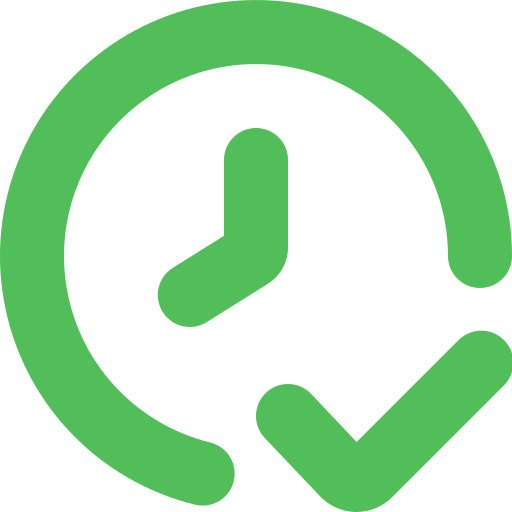Please describe your proposed solution.
Summary: We create Risk Ratings for all fungible Assets on Cardano. We base our risk ratings on objective facts, the transactions on the blockchain belonging to a project. These ratings will be available for all community members for free to reduce the amount of ADA lost to poor projects while increasing the amount of ADA available for good projects.
- How we perceive the problem we are solving: The decentralization inherent to blockchains enables wide participation, but it also allows bad actors to join our networks, seeking to exploit our community. The risk associated with bad actors is a major problem in crypto, deterring users and investors and slowing down the mass adoption of these systems. We address this problem by providing access to quantitative metrics of the risk associated with the many Cardano assets in the market. This will keep our community safe from scams and make truly informed investment decisions easier for everyone.
- This is achieved by providing two critical services. First, Xerberus allows users to explore and compare assets using a risk ranking system that categorizes assets from AAA to D, where D indicates a high probability that the token will default to a price of zero. Through this risk ranking system, users have an immediate, independent, and impartial assessment that they can use to make informed decisions. The second service we provide is an alert system that warns users when the risk profile of a token changes, providing them with a window of opportunity to protect their investments or spot promising opportunities early on as the associated risk increases or decreases, respectively. The risk scores and their changes are triggered by the only objective facts that can be established about all tokens: the transaction patterns connected to them on the blockchain. Our system scans all transactions of a token to capture the underlying pattern, recording, for instance, the type of wallets holding the token and other activities they engage in. When the transaction patterns look unhealthy, i.e., similar to those from known failed projects or even scams, the risk score assigned to the token is adjusted.
- Our reasons for approaching it in the way that we have: Our models are based on all available transactions because they are objective facts that contain relevant information. For instance, a token primarily owned by wallets that tend to buy and hold tokens long-term is less volatile than tokens primarily owned by wallets that tend to hold tokens for only a few weeks. Another example is that a certain group of wallets buying a token could be a good sign, as the holdings in these wallets correlate with successful projects, adding confidence to the likelihood of success. Additionally, certain transaction patterns might be associated with scams because a group of bad actors can be exploiting a particular vulnerability or executing the same strategy repeatedly. These transaction patterns will be recognized by our system and correlated with a high default risk. The application of transaction pattern information in these examples is intuitive. However, transaction patterns can offer much more information. Free markets tend to find fair prices because all available information about an asset is "priced in." Knowledgeable traders can often spot even slightly mispriced assets and open positions to benefit from the spread between the current and the actual perceived valuation. Assuming that these actions reflect traders' beliefs in asset performance, then all aggregated transactions belonging to an asset should contain all the available information about that asset, and we use sophisticated mathematical models to extract this information. You can read about our mathematical models in the white paper (<https://docsend.com/view/kw5uizzscsh36sqj>).
- Who our project will engage: We will make the risk ranking freely available to everyone, making it easy for the broad community to enjoy the positive impact of our risk scores. Additionally, we create a free API for other builders and power users so they can integrate our scores into their products, such as oracles, portfolio builders, or trading bots.
- How we will demonstrate or prove our impact: If the people who use Xerberus ranking stay safer and invest better than those who do not use our rankings, our impact is proven. We further describe how to prove our impact in detail in the KPI section. In summary, we will publish key performance indicators that show if the number of ADA invested in rug pulls is decreasing. Having the number of lost ADA decrease and the ADA spent on good projects increase will create a compounding positive interest that all Cardano Community Members will benefit from.
How does your proposed solution address the challenge and what benefits will this bring to the Cardano ecosystem?
The challenge of Products & Integration aims to fund projects that drive user adoption. One of the biggest challenges we face in mass adoption is that many inexperienced users are reluctant to engage with ecosystem services due to the steep learning curve and the predatory actions of bad actors. Scams are undoubtedly one of the largest drivers of user churn (users leaving the ecosystem), as it is naturally disappointing to save ADA and then lose it to one of many rug pulls.
Cardano already enjoys the reputation of being the blockchain without hacks. If we now reduce rug pulls and increase support for quality projects, Cardano's position among other blockchains will be further strengthened by the safety its system provides to users. The security of users is an ultimate driver of both retail and institutional adoption, and Xerberus aims to provide exactly this value proposition.
Security for users and businesses adopting Cardano is critical because our ultimate aim is to provide a decentralized alternative to the centralized banking system currently in power. If we cannot convince the wider public that our systems are more secure from a user perspective than traditional banking, we will fall short of achieving our goals. Therefore, creating a safe user experience will have a tremendous impact on Cardano's broad adoption.
The goal of this funding proposal is to make Xerberus the "go-to" platform to check the legitimacy of projects. This will allow users an easy and swift understanding of asset risk, thereby helping users make rational, data-driven, and informed decisions, rather than simply acting on their gut feeling or the (questionable?) advice of influencers. This independent and impartial assessment will empower users and help prevent loss of capital through impulsive decisions, such as FOMO. Furthermore, it will also help reduce end users' regrets and increase the efficiency of their investment funds by directing them to safer projects, building trust in the ecosystem, and creating happy and loyal users.
How do you intend to measure the success of your project?
The successful accomplishment of Xerberus' mission will be quantifiable by the reduction in user funds lost due sto high-risk assets across the entire Cardano ecosystem. We monitor this progress through a key performance indicator (KPI) known as "Accumulated Rugged ADA," with the aim of consistently diminishing its growth rate. The measurable impact of mitigating user fund losses extends beyond numerical value, providing two significant benefits. Firstly, it enhances user safety within the Cardano ecosystem by equipping them with tools to avoid capital loss in high-risk assets. Secondly, it amplifies capital investment in high-quality projects, thereby elevating the overall quality of the ecosystem. While quantifying the effects on the ecosystem presents challenges, the association between Xerberus and these positive downstream effects is robust and can be statistically substantiated.
At the project level, we assess the trust placed in Xerberus through user surveys and engagement with our product. To gauge the product's success, we employ standard KPIs such as the number of unique monthly users and the frequency of opened email alerts. In addition, we utilize specific KPIs to evaluate the efficacy of our model. This includes the "Error Alert'' metric, which calculates the ratio of false alerts to the total number of alerts issued, enabling us to refine our system's accuracy. Furthermore, we track an inverse KPI called "Alert Missed," which measures the ratio of issued alerts to the number of events that should have triggered an alert upon review. These metrics serve to optimize the sensitivity of our system within the most effective range.
Please describe your plans to share the outputs and results of your project?
Xerberus, as a project, is diligently working on the forefront of mathematics. Six months ago, we reached a milestone in our research where we surpassed all previously published results in the field we are working on, combining Algebraic Topology, Graph Theory, and Machine Learning.
During the development, we will share knowledge and publish papers: The primary objective of this Catalyst proposal is to secure funding to expand our Research and Development activities and acquire computational power that aligns with the project's requirements, enabling us to reliably transition our model to production. With this progress, we intend to share our findings through papers that we plan to submit to academic journals within the next 12 months, acknowledging the funding provided by Project Catalyst.
After the development, we will share the product: The risk model will be offered to all Cardano users at no cost, providing Risk Scores for all Native Assets. These scores will be easily accessible to end users through a simple interface and to developers via an API that can be freely utilized to incorporate Xerberus' Scores into their own products. In the future, we envision making our risk scores available on the blockchain itself, utilizing a proof system. However, this is beyond the scope of the current proposal.
After the development, we will share our code: Our entire research is based on public blockchain data and mathematical principles that are potentially accessible to anyone with sufficient knowledge and motivation to explore them. As a result, we will open-source the entire codebase developed for our research and model implementation. The models we create serve as foundational components for decentralized risk rating organizations. Ultimately, our organization strives to be verifiable by everyone, which is yet another reason for us to embrace open-source practices. Data scientists and builders across the entire Cardano Ecosystem will benefit from our published codebase.

